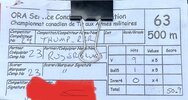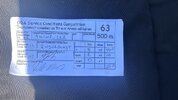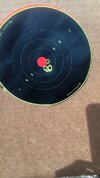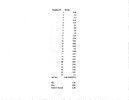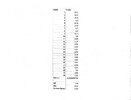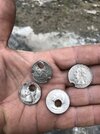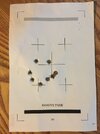thump_rrr
Member
Sorry but I am confused. Can't decipher if this thread is about loading on budget equipment of trying to produce budget rounds.
For 3 years now I have been loading 223 to be used in a local competition against some very skilled shooters. The equipment I use to do this was al purchased used. From the single stage RCBS JR3 press that I do all my brass prep on to the Lee 3 hole turret press that I actually do all the assembly on. Powder is weighted on a Lyman D5 scale and dispensed in a Lee Auto Drum measure. Trickled up with a Hornady trickler. The dies used were purchased new and they too are plain old Lee..
Don't know about where you shoot but at my range 223 AND 6.5CM brass is everywhere, free for the pickin. Matter of fact it is so plentiful that I can be selective with what I pick up. Yes all I ever shoot is range pick-up brass because I am not going to spend $1.00+ each for Lapua of Nosler brass.
Right now I am loading and shooting Hornady 60gr VMAX and have also shot 69gr Sierra Match King, 69gr Barnes Match Burners and 69gr Nosler Custom Comp.
I have over the course of the past 3 years posted pictures of my league targets and so far I have nothing to be ashamed of. So in my humble opinion used cheap tools can be used to produce very accurate ammunition.
Someone started a thread on how much it cost his grandson to start shooting 6.5CM.
I don't count the cost of bullets, primers and powder in my caliber calculations but to each their own.
I didn't want to mess up his thread so I started my own.
I have always stated that accurate ammo can be produced on budget equipment and that even range pickup brass may be suitable in some places where it is abundant.
I am now trying to see how accurate it can be.
There are different levels of accuracy required depending on what you are doing.
The kill zone on a small deer is about 8"-9".
A rifle that shoots 2 MOA should be able to do that at 200Y assuming perfect aim from the hunter in perfect conditions.
In Precision Rifle Service Conditions which I shoot the Vee Bull is 4" wide x 8" high while the Bull is 8" wide x 16" high.
At 500m (546.8Y) a 1/3 MOA rifle should be able to stay in the Vee assuming all other variables are removed.
The added complication for me is that the target is hand held, it can pop up either left, right, or center and it is only up for 3 seconds.
If shooting PRS where some stages have 1/2 MOA targets at 1,000y you would need a rifle that can keep 1/4 MOA to hit that target assuming all other variables are removed.
I'm not saying that it's wrong to buy quality equipment but it may not be necessary to achieve your goals.
Last edited:


